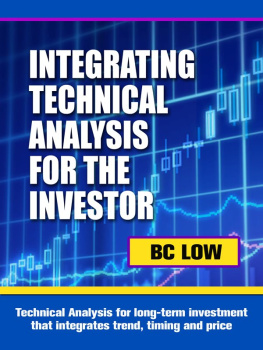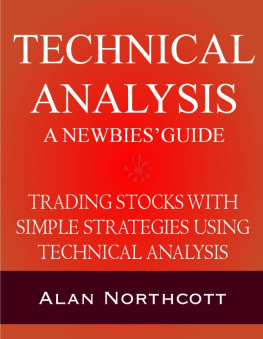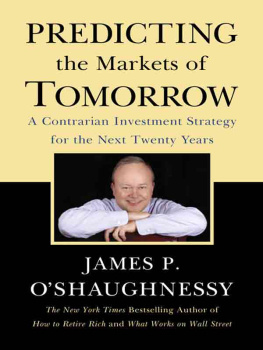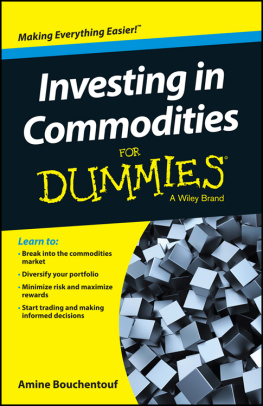Copyright 2014 by McGraw-Hill Education. All rights reserved. Except as permitted under the United States Copyright Act of 1976, no part of this publication may be reproduced or distributed in any form or by any means, or stored in a database or retrieval system, without the prior written permission of the publisher.
ISBN: 978-0-07-182655-6
MHID: 0-07-182655-6
The material in this eBook also appears in the print version of this title: ISBN: 978-0-07-182517-7, MHID: 0-07-182517-7.
eBook conversion by codeMantra
Version 2.0
All trademarks are trademarks of their respective owners. Rather than put a trademark symbol after every occurrence of a trademarked name, we use names in an editorial fashion only, and to the benefit of the trademark owner, with no intention of infringement of the trademark. Where such designations appear in this book, they have been printed with initial caps.
McGraw-Hill Education books are available at special quantity discounts to use as premiums and sales promotions or for use in corporate training programs. To contact a representative, please visit the Contact Us pages at www.mhprofessional.com.
This publication is designed to provide accurate and authoritative information in regard to the subject matter covered. It is sold with the understanding that neither the author nor the publisher is engaged in rendering legal, accounting, securities trading, or other professional services. If legal advice or other expert assistance is required, the services of a competent professional person should be sought.
From a Declaration of Principles Jointly Adopted by a Committee of the American Bar Association and a Committee of Publishers and Associations
TERMS OF USE
This is a copyrighted work and McGraw-Hill Education and its licensors reserve all rights in and to the work. Use of this work is subject to these terms. Except as permitted under the Copyright Act of 1976 and the right to store and retrieve one copy of the work, you may not decompile, disassemble, reverse engineer, reproduce, modify, create derivative works based upon, transmit, distribute, disseminate, sell, publish or sublicense the work or any part of it without McGraw-Hill Educations prior consent. You may use the work for your own noncommercial and personal use; any other use of the work is strictly prohibited. Your right to use the work may be terminated if you fail to comply with these terms.
THE WORK IS PROVIDED AS IS. McGraw-Hill Education AND ITS LICENSORS MAKE NO GUARANTEES OR WARRANTIES AS TO THE ACCURACY, ADEQUACY OR COMPLETENESS OF OR RESULTS TO BE OBTAINED FROM USING THE WORK, INCLUDING ANY INFORMATION THAT CAN BE ACCESSED THROUGH THE WORK VIA HYPERLINK OR OTHERWISE, AND EXPRESSLY DISCLAIM ANY WARRANTY, EXPRESS OR IMPLIED, INCLUDING BUT NOT LIMITED TO IMPLIED WARRANTIES OF MERCHANTABILITY OR FITNESS FOR A PARTICULAR PURPOSE. McGraw-Hill Education and its licensors do not warrant or guarantee that the functions contained in the work will meet your requirements or that its operation will be uninterrupted or error free. Neither McGraw-Hill Education nor its licensors shall be liable to you or anyone else for any inaccuracy, error or omission, regardless of cause, in the work or for any damages resulting therefrom. McGraw-Hill Education has no responsibility for the content of any information accessed through the work. Under no circumstances shall McGraw-Hill Education and/or its licensors be liable for any indirect, incidental, special, punitive, consequential or similar damages that result from the use of or inability to use the work, even if any of them has been advised of the possibility of such damages. This limitation of liability shall apply to any claim or cause whatsoever whether such claim or cause arises in contract, tort or otherwise.
To my son, Thomas William Pring
CONTENTS
PREFACE
There is no reason why anyone cannot make a substantial amount of money in the financial markets, but there are many reasons why many people will not. As with most endeavors in life, the key to success is knowledge and action. This book has been written in an attempt to shed some light on the internal workings of the markets and to help expand the knowledge component, leaving the action to the patience, discipline, and objectivity of the individual investor.
The mid- to late-1980s saw the expansion of investment and trading opportunities to a global scale in terms of both the cash and the futures markets. In the 1990s, innovations in the communications industry enabled anyone to plot data on an intraday basis for relatively little cost. Today, numerous charting sites have sprung up on the Internet, so now virtually anyone has the ability to practice technical analysis. Indeed, the technology of teaching technical analysis has progressed since the first edition of this book in 1979. We pioneered the teaching of the subject in video format in the mid-1980s, but Ill venture to guess that technological progress and the acceptance of new media formats will mean that e-book sales of this edition will outstrip traditional sales of the physical book before it runs its course. Already, the written word is in competition with audiovisual presentations, such as my recently introduced online interactive technical analysis video course at pring.com; others are sure to follow!
As a consequence of the technological revolution, time horizons have been greatly shortened. I am not sure that this is a good thing because short-term trends experience more random noise than longer-term ones. This means that the technical indicators, while still the most effective tool, are not generally as successful when applied to longer-term trends. The fifth edition of Technical Analysis Explained has been expanded and totally revised to keep abreast of many of these changes, and to include some technical innovations and evolvement in my own thinking since the publication of the fourth edition. Nearly every chapter has been thoroughly reworked and expanded. In the interest of efficiency, some have been dropped and others substituted.
Considerable attention continues to be focused on the U.S. equity market, but many of the marketplace examples feature international stock indexes, currencies, commodities, and precious metals. Special chapters also feature technical analysis of the credit markets and global equities. Our focus has also been expanded to include analysis of the secular, or very long-term, trends of stocks, bonds, and commodities. In most cases, the marketplace examples have been updated, but some older ones from previous editions have been left in deliberately to give the book some historical perspective. These historical examples also underscore the point that nothing has really changed in the last 100 years. The same tried-and-true principles are as relevant today as they always were. I have no doubt whatsoever that this will continue to be so in the future.
Thus, technical analysis could be applied in New York in 1850, in Tokyo in 1950, and in Moscow in 2150. This is true because price action in financial markets is a reflection of human nature, and human nature remains more or less constant. Technical principles can also be applied to any freely traded entity in any time frame. A trend-reversal signal on a 5-minute bar chart is based on the same indicators as one on a monthly chart; only the significance is different. Shorter time frames reflect shorter trends and are, therefore, less significant.
The chronological sequence of some of the opening chapters differs from previous editions. In Martin Pring on Price Patterns








